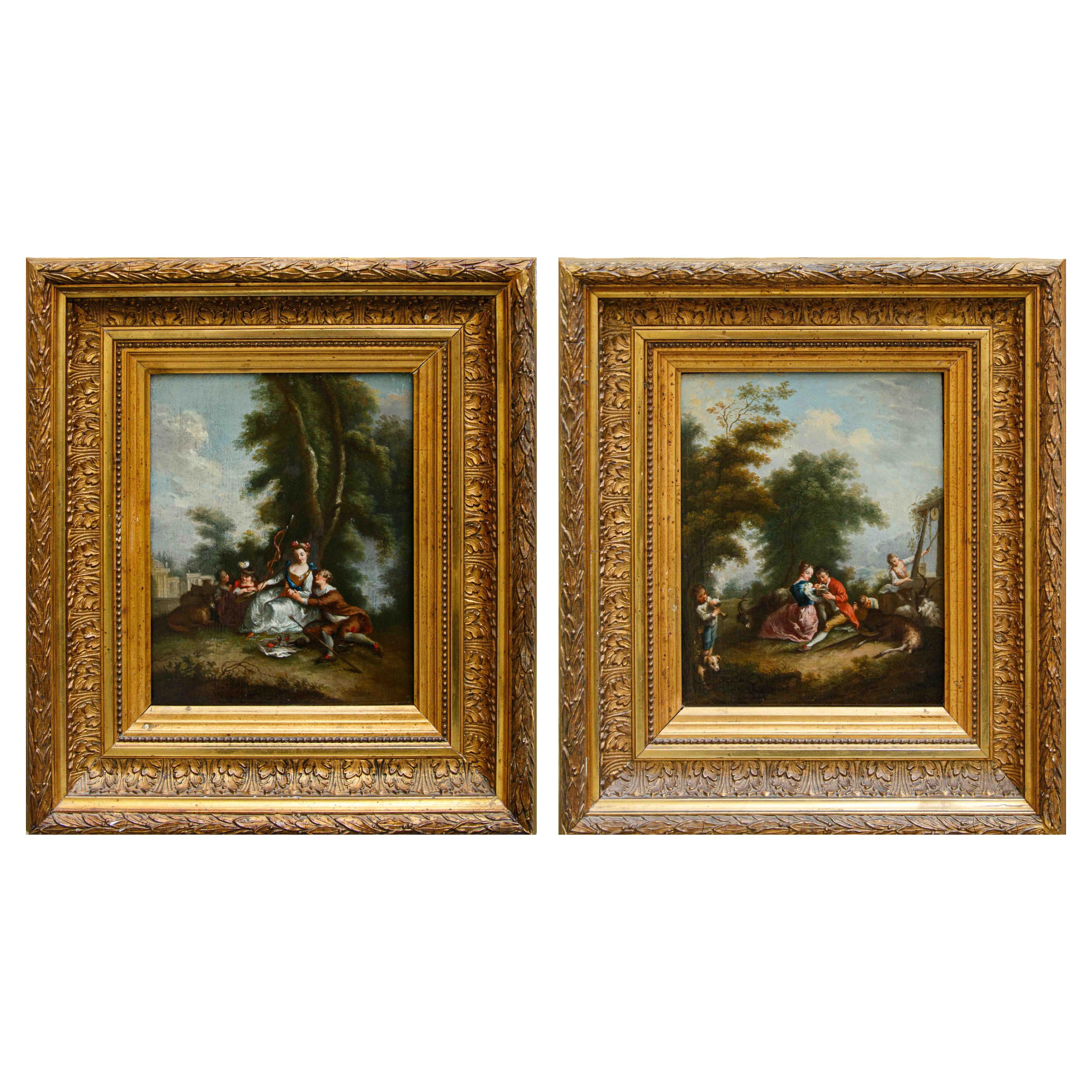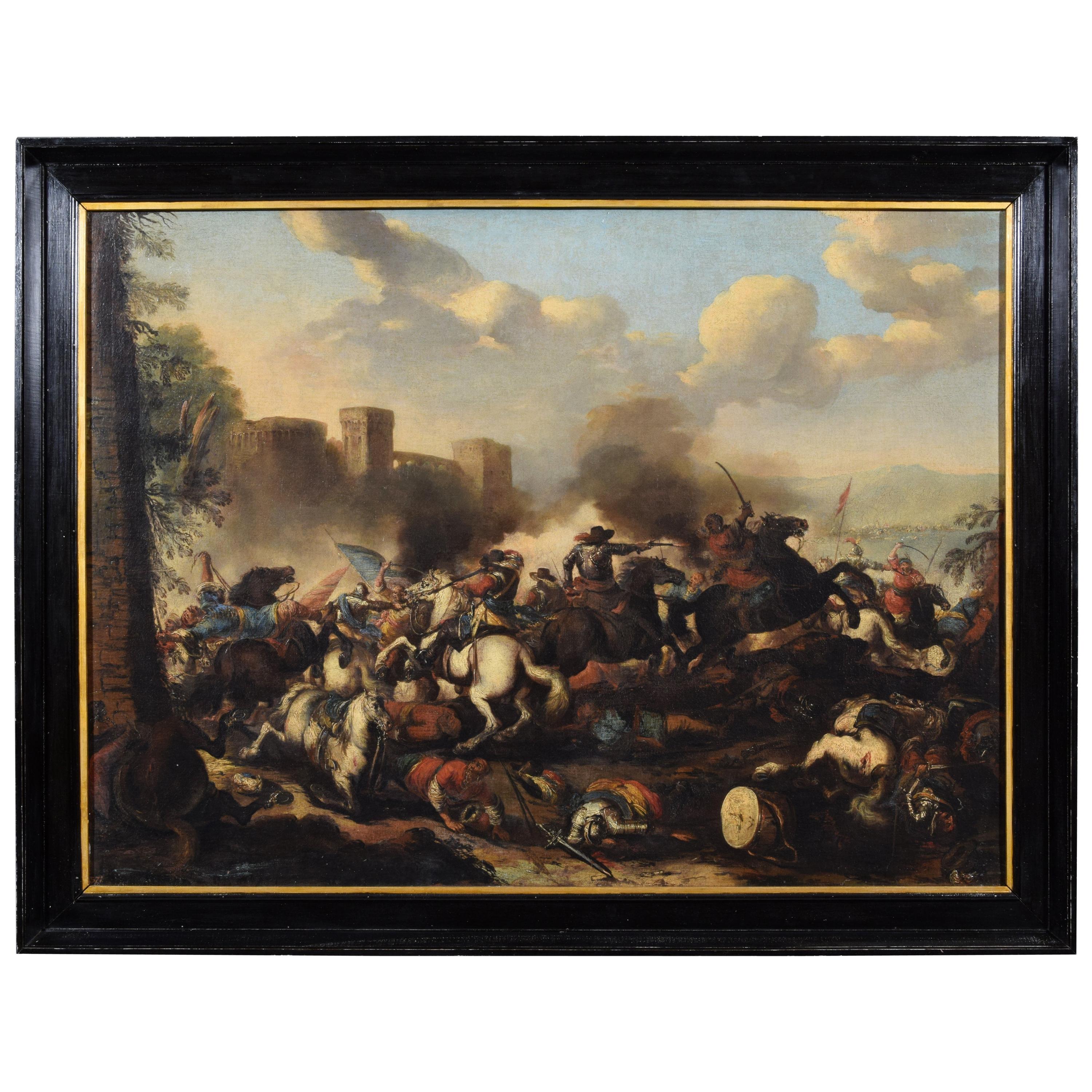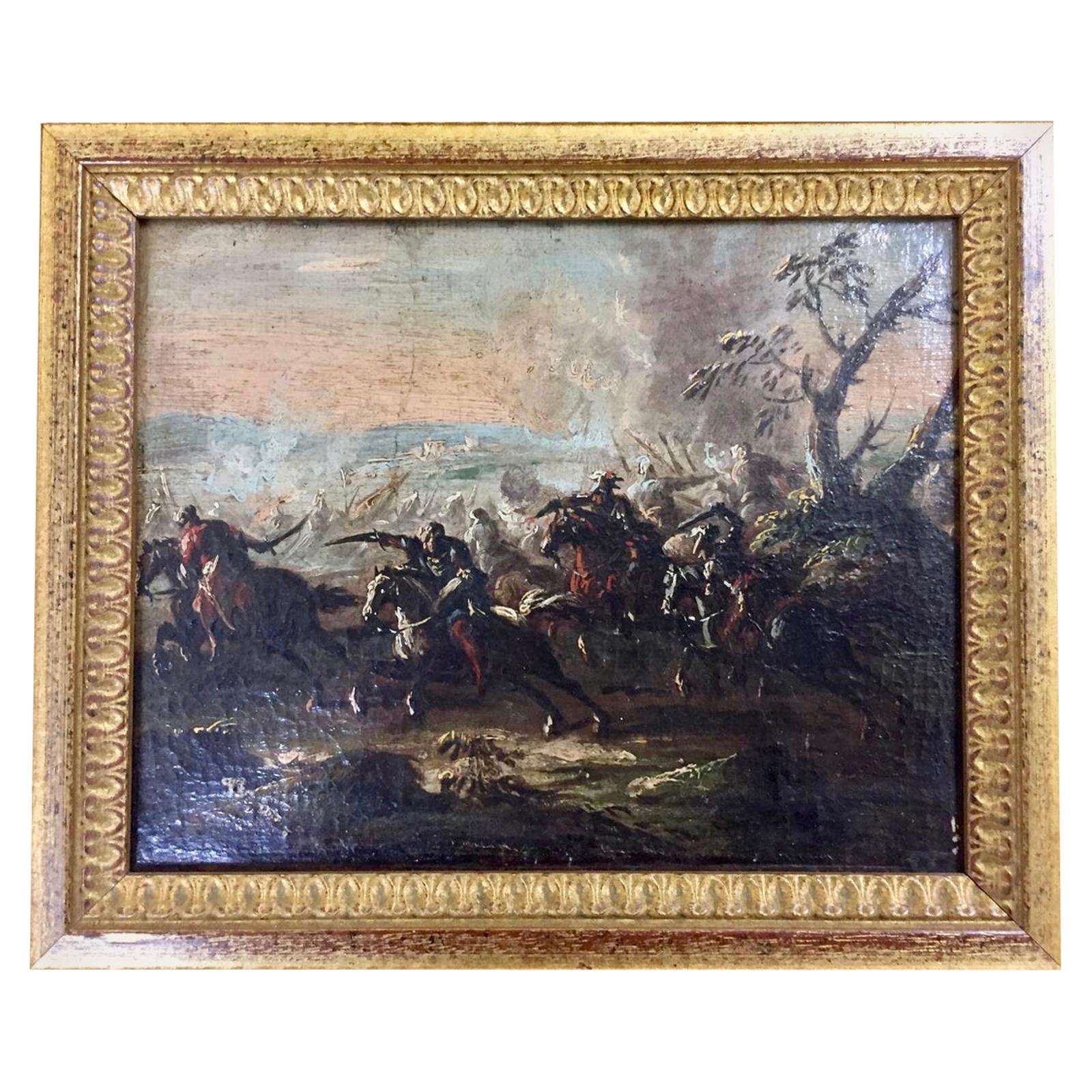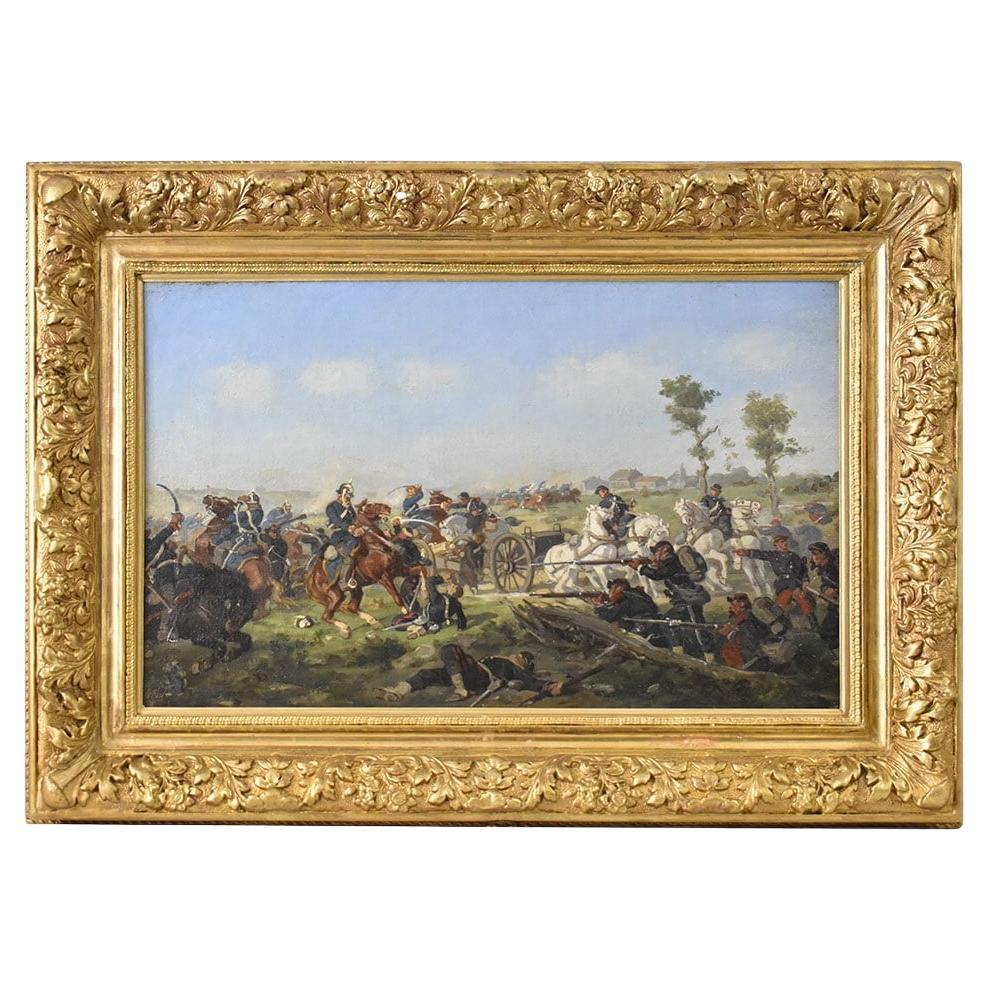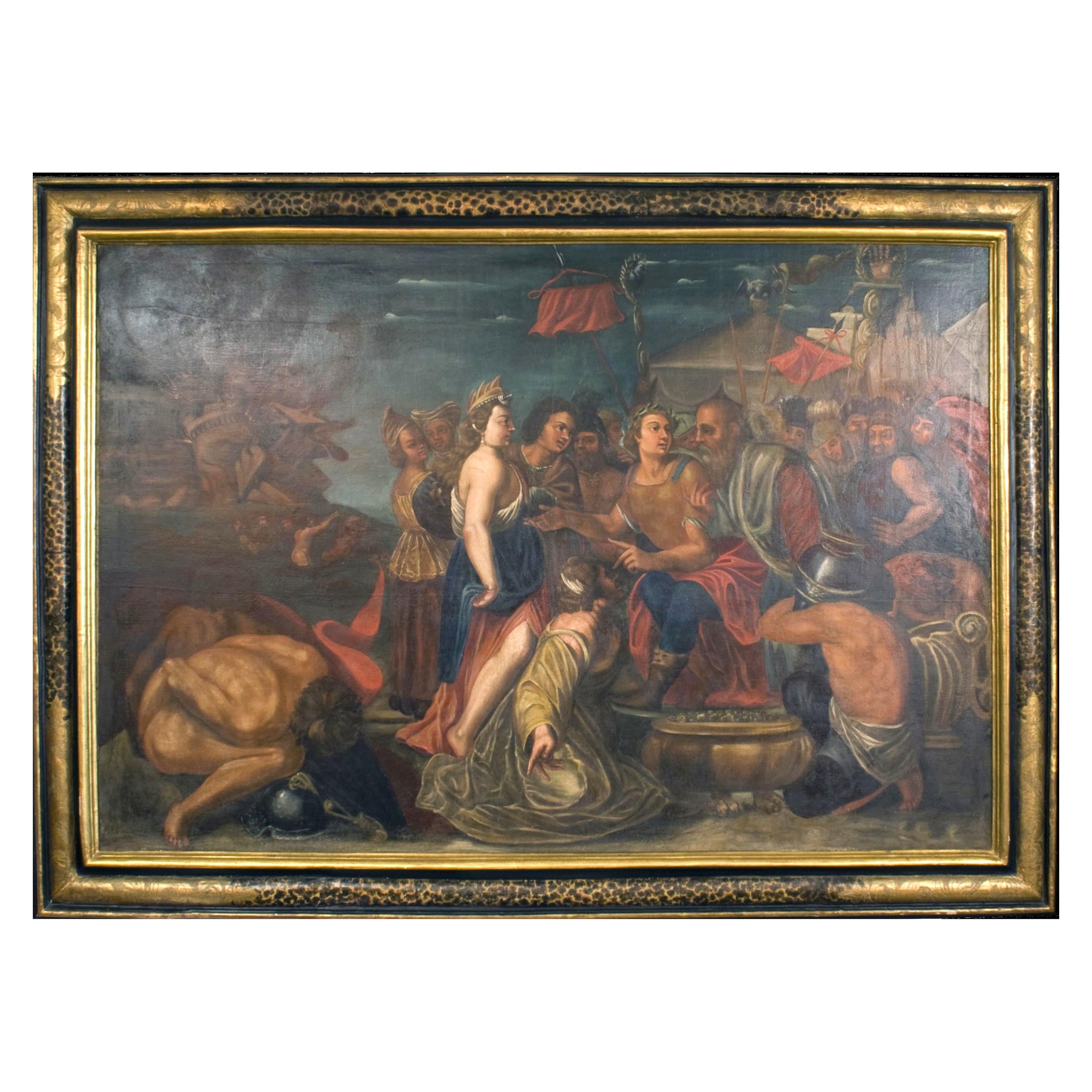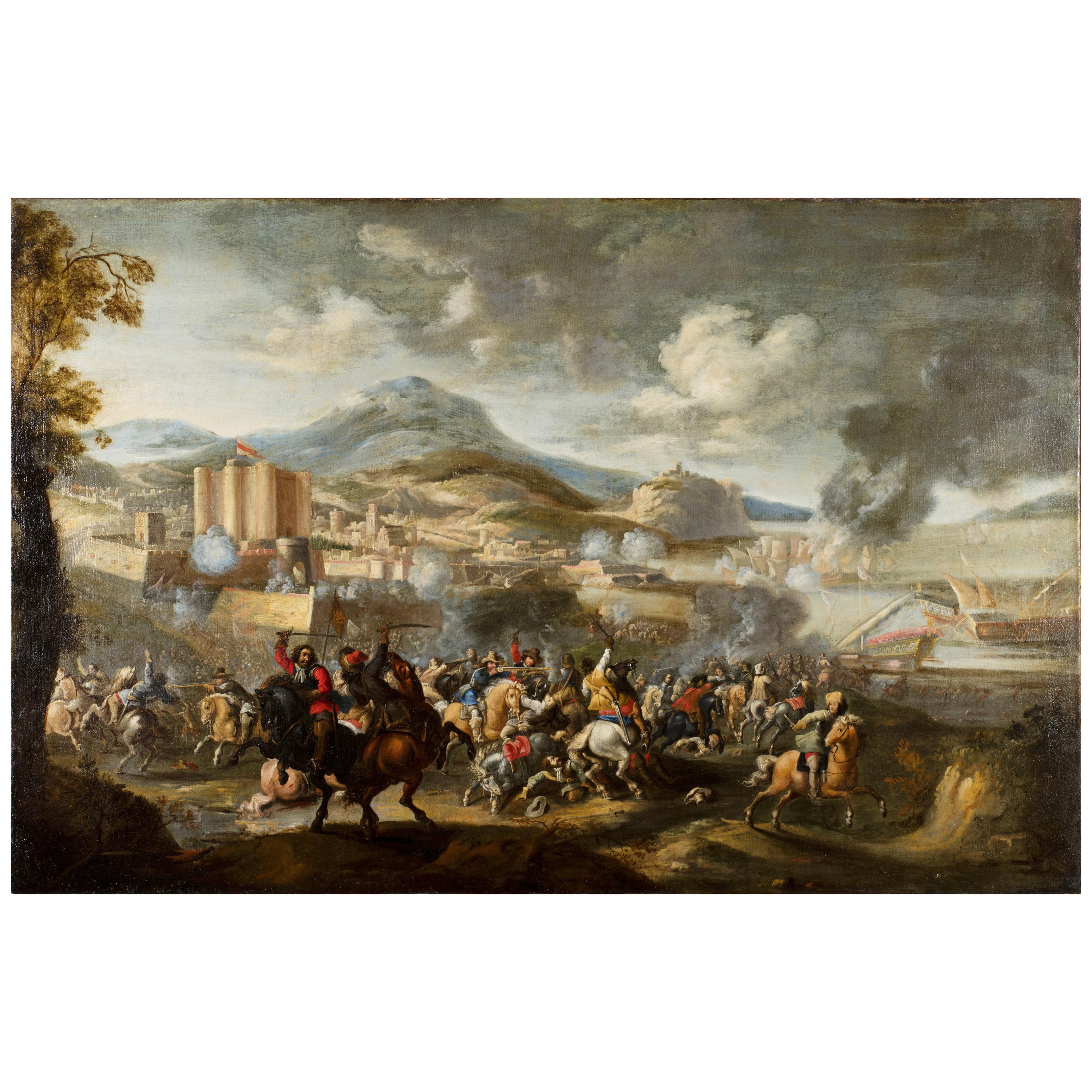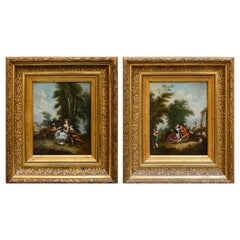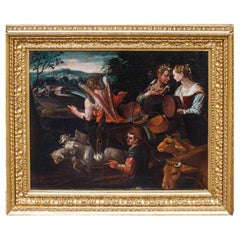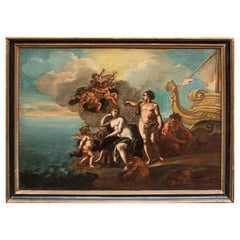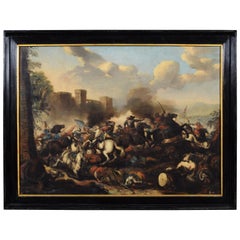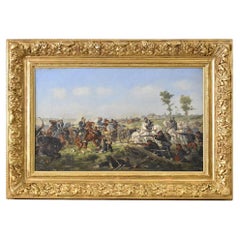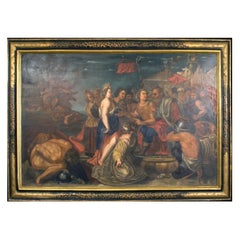Items Similar to Neapolitan school, 17th century, battle scenes
Want more images or videos?
Request additional images or videos from the seller
1 of 21
Neapolitan school, 17th century, battle scenes
$9,345.52per set
£6,957.13per set
€7,800per set
CA$12,801.03per set
A$14,237.54per set
CHF 7,434.40per set
MX$173,255.66per set
NOK 94,948.61per set
SEK 89,045.05per set
DKK 59,378.68per set
Shipping
Retrieving quote...The 1stDibs Promise:
Authenticity Guarantee,
Money-Back Guarantee,
24-Hour Cancellation
About the Item
Neapolitan School of the 17th Century
Battle scenes between Christians and Turks
(2) Oil on canvas, 52 x 71 cm
Framed, 61 x 80 cm
One genre that met with wide acclaim in seventeenth-century Neapolitan painting and flattering success among collectors was that of battle. The Parthenopean nobility loved to adorn the walls of their salons with battles depicting single acts of heroism or complex combats that exalted patriotism and warlike prowess, virtues with which members of the wealthy aristocracy of the time liked to identify.
The Church, in the Neapolitan area, was also at the forefront of commissions, commissioning artists to depict the spectacular triumphs of Christendom over the infidels, such as the memorable naval battle of Lepanto in 1571, which marked a historical turning point with the great victory over the Turks, becoming a repeated iconographic motif imbued with devotional value, replicated several times through the interest of the Dominican order, which was very devoted to Our Lady of the Rosary, who benevolently followed earthly events from above in heaven. Other themes dear to the Church within the genre were drawn from the Old and New Testaments, such as Constantine's Victory at the Milvian Bridge or St. James at the Battle of Clodius.
Among the leading Neapolitan artists of that period, several specialized in battle scenes: these include Francesco Graziani, known as Ciccio Napoletano, a battler active between Naples and Rome in the second half of the 17th century; Andrea De Lione, who lived in Naples from 1610 to 1685, a versatile narrator of battles without heroes, of horsemen assaulting or retreating, and of profane scenes immersed in a wild and primordial, yet already classicized, nature; and Carlo Coppola. The latter was active for more than twenty years, from 1640 to 1665, and his catalog, which is interesting because it bears witness to a particular historical moment and the tastes of private patrons, has yet to be defined, although many of his works are initialed. It is precisely to Coppola's corpus that these two paintings could come close: with the production of the Neapolitan battler the two paintings seem to share the smoky colors, the accentuated chiaroscuro and the marked dynamism of the scenes. Moreover, it is necessary to mention how that of the battle between Christians and Turks was an absolutely central theme in Coppola's pictorial production. Also close to the manner of the two paintings analyzed here is the production of one of Coppola's most celebrated pupils, Giovanni Luigi Rocco: the paintings show similarities with two Scenes of Battle between Christians and Muslims currently part of a private collection in Parma.
- Dimensions:Height: 72 in (182.88 cm)Width: 52 in (132.08 cm)Depth: 2 in (5.08 cm)
- Sold As:Set of 2
- Style:Other (In the Style Of)
- Materials and Techniques:Canvas,Oiled
- Place of Origin:
- Period:
- Date of Manufacture:XVII Century
- Condition:
- Seller Location:Milan, IT
- Reference Number:1stDibs: LU5918242666862
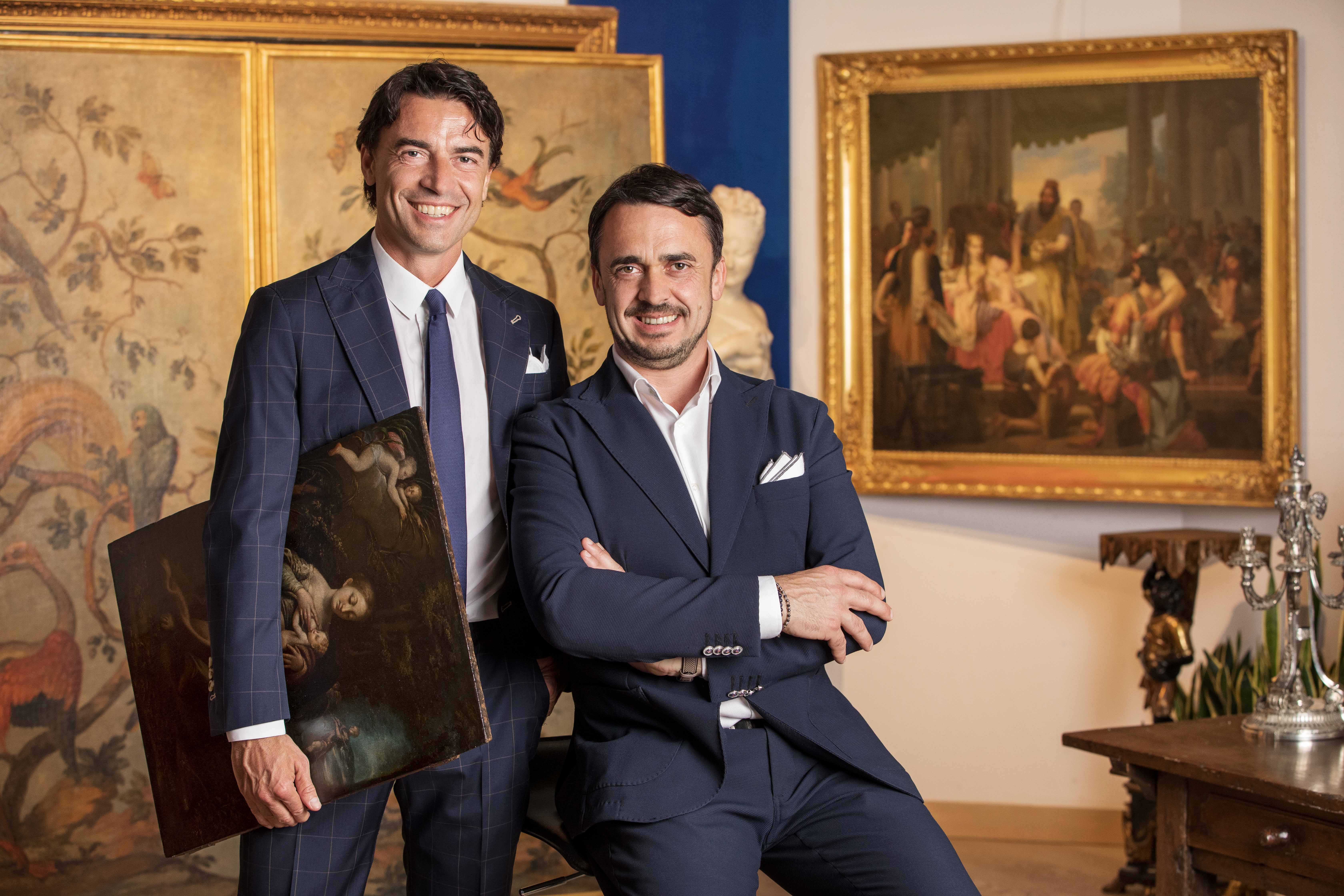
About the Seller
5.0
Vetted Professional Seller
Every seller passes strict standards for authenticity and reliability
Established in 2000
1stDibs seller since 2021
30 sales on 1stDibs
- ShippingRetrieving quote...Shipping from: Milan, Italy
- Return Policy
Authenticity Guarantee
In the unlikely event there’s an issue with an item’s authenticity, contact us within 1 year for a full refund. DetailsMoney-Back Guarantee
If your item is not as described, is damaged in transit, or does not arrive, contact us within 7 days for a full refund. Details24-Hour Cancellation
You have a 24-hour grace period in which to reconsider your purchase, with no questions asked.Vetted Professional Sellers
Our world-class sellers must adhere to strict standards for service and quality, maintaining the integrity of our listings.Price-Match Guarantee
If you find that a seller listed the same item for a lower price elsewhere, we’ll match it.Trusted Global Delivery
Our best-in-class carrier network provides specialized shipping options worldwide, including custom delivery.More From This Seller
View All18th century, French School, Gallant scenes
Located in Milan, IT
18th century, French School
Gallant Scenes
(2) Oil on panel, 24 x 19 cm
Framed, 44 x 36 cm
This pair of works attributable to the artistic context of the French eighteenth centu...
Category
Antique 18th Century and Earlier Italian Other Paintings
Materials
Wood
Venetian school, Tobias and Sara in Nineveh, oil on canvas, 16th century
Located in Milan, IT
Venetian School, second half of the 16th century
Tobiah and Sarah led to Nineveh by the archangel Azariah
Oil on canvas, 48 x 56 cm - Framed, 58 x 72 cm
The present canvas, made w...
Category
Antique 16th Century Paintings
Materials
Canvas
17th century, Emilian school, Rural landscape with gallant scenes
Located in Milan, IT
17th century, Emilian school
Rural landscape with gallant scenes
Oil on canvas, 37 x 47.5 cm
Framed, 61 x 50.5 cm
The bucolic amenity of the present is reflected within the joyo...
Category
Antique 18th Century and Earlier Italian Other Paintings
Materials
Canvas
Neapolitan school of the 17th-18th centuries, Bacchus and Ariadne abandoned by Theseus
Located in Milan, IT
Neapolitan school of the 17th-18th centuries
Bacchus and Ariadne abandoned by Theseus
Oil on canvas, 74 x 100 cm
Framed, 89 x 111 cm
The painting under consideration, attributab...
Category
Antique 18th Century and Earlier Italian Other Paintings
Materials
Canvas
19th Century, Views of the Bosphorus
Located in Milan, IT
19th Century
Views of the Bosphorus
Oil on canvas, 75.5 x 105 cm
Framed, 89 x 118 cm
In the full nineteenth-century taste for travel and Orientalism, the two splendid views captu...
Category
Antique 19th Century Turkish Other Paintings
Materials
Canvas
French School, 18th century, Garden with figures
Located in Milan, IT
French School, 18th century
Garden with figures
Oil on canvas, 40 x 53 cm
Framed, 59 x 72 cm
Category
Antique 18th Century and Earlier French Other Paintings
Materials
Canvas
You May Also Like
18th Century Italian Oil on Canvas Painting with Battle by Antonio Calza
By Antonio Calza
Located in IT
Antonio Calza (Italy, Verona, 1653-18th April 1725)
"Battle between Christian and Turkish cavalry with castle"
The painting depicts a bloody battle between Christian and Turkish cavalry. Characterized by dynamism, intensity of color and light, the main scene occupies the lower horizontal section of the canvas, optically interrupted by the black fumes of the shots from which emerge, on the left, the towers of a fortress. On the right, in the distance you can see the combat in progress in the countryside, beyond which you can see the pale presence of hills that create a fifth, marking the horizon. To frame the scene contributes to the left, against light and in the foreground, a portion of the wall. The painter, however, introduces a horse on the ground, of which we see only the back, a ruse to involve the observer making him become active and participate in the scene. In the foreground, lifeless bodies, wounded horses and, scattered on the ground, weapons and a drum enhance the drama of the clash.
The excitement and expressive force, the intense chromatic range attentive to the conditions of light and the fine brushstrokes, decisive and dramatic, suggests the attribution to Antonio Calza, one of the most important painters of battles of the seventeenth century, excellent student and continuator of the greatest interpreter of the genre, Jacques Courtois called il Borgognone (Saint-Hyppolite 1621 - Rome 1676). Il Borgognone, although not having had a real school or direct students, places itself as a primary reference point by the Italian and foreign "battaglisti".
The genre of battle painting found great success in the collections of the Italian and European nobility of the seventeenth and eighteenth centuries. The battles of the Italian Renaissance, in which the scene converged towards a precise protagonist, evolve towards a type of combat "without hero". The bloody realism of the details and the dynamic development of the narrative confuse the figure of the protagonist, when present, to give importance to the swirl of horses and armed fighters, among which, moreover, does not emerge a winner.
The certain documents relating to the life and movements of Antonio Calza are scarce; it was equally difficult to reconstruct, from the critics, a catalogue of autograph works. Through paintings in private collections, in museums and paintings passed on the antiques market it has been possible to identify a copious corpus of works that can be traced back to his hand. The work of art historians, together with that of antique dealers, in conferring proper attributions in order to best outline the figure of Calza, continues but studies are still in progress. In this sense, the work of Giancarlo Sestieri should certainly be noted, who investigated the artistic production of the battaglisti and Calza, thus allowing the comparison of the numerous photographic works reported, to identify and recognize the stylistic qualities that distinguish the corpus of paintings assigned to him today.
Antonio Calza was born in 1653 in Italy, in Verona and in 1664 he entered the school of Carlo Cignani in Bologna, dedicating himself to painting battles and landscapes. He then perfected in Rome, where he knew the works of the then undisputed head of the sector, Jacques Courtois called the Burgundian. In 1675 he returned to Verona and married an 88-year-old widow who, dying, left him a rich inheritance. Much appreciated by the nobility and the bourgeoisie, he received numerous commissions. Bartolomeo Dal Pozzo (Le Vite de' pittori, de gli scultori et architetti veronesi, 1718) praises "three great paintings of battles...
Category
Antique Late 17th Century Italian Baroque Paintings
Materials
Canvas
Francesco Graziani, Called Ciccio Napoletano, 17th Century
By Francesco Graziani
Located in CH
Francesco Graziani, Called Ciccio Napoletano, 17th Century
He was active in Naples and Rome around the second half of the 17th Century.
Category
Antique Late 17th Century Italian Baroque Paintings
Materials
Canvas
Quadri Antichi, Scena Di Battaglia, Campo Di Battaglia, Olio Su Tela, XIX Secolo
Located in Breganze, VI
La categoria Quadri Antichi, propone una Pittura Ad Olio Su Tela di epoca Ottocento.
Dipinti antichi di paesaggi, con una scena di battaglia tra soldati francesi e austriaci, del XIX secolo.
Si tratta di quadri con paesaggi che rappresentano i campi di battaglia con realismo.
L'opera non è firmata, ma si tratta di un pittore francese attivo nell'Ottocento.
La pittura a olio veste con una bella cornice dorata in foglia di oro zecchino coeva all'opera.
La pittura antica...
Category
Antique Late 19th Century French Napoleon III Paintings
Materials
Canvas
Large historical painting 18th century, Italian school
Located in Cesena, FC
Large historical painting 18th century, Italian school
"Darius' mother pleading before Alexander after the battle of Issus."
Oil on canvas 210 x 290 cm
Painted with great strength...
Category
Antique Late 18th Century Italian Paintings
Materials
Canvas, Wood, Giltwood
17th Century, Italian Painting with Battle attributed to Marzio Masturzo
Located in IT
Marzio Masturzo, attributed (Active in Italy - in Naples and Rome- in the second half of the 17th century)
"Battle between cavalry and vessels with fortified city on the left"
...
Category
Antique Late 17th Century Italian Baroque Paintings
Materials
Canvas
$40,437 Sale Price
25% Off
Italian Francesco or Pietro Graziani Neapolitan battle scene, 17th/18th Century
Located in CH
Italian Francesco or Pietro Graziani Neapolitan battle scene, 17th/18th Century
This battle scene is attributable to one of the two Graziani ( Francesco or Pietro) battle scene pain...
Category
Antique Late 17th Century Italian Baroque Paintings
Materials
Canvas
More Ways To Browse
Vintage Bauhaus Jewelry
Vintage Jewellery Display Cabinets
White Tara
William And Mary Chest Of Drawers
Wwi German
Zenith 1960
16th Century Tudor
17th Century Italian Commode
17th Century Japanese Screens
1930 Kitchen Chairs
1960s Bedroom Suite
70s Bed
A Louis Xv Bombe Marquetry Commode
Antique 18th C Walnut Chest Of Drawers
Antique Beds India
Antique Delft Bowl
Antique Drop Pull Handles
Antique Glass Apothecary Jar
